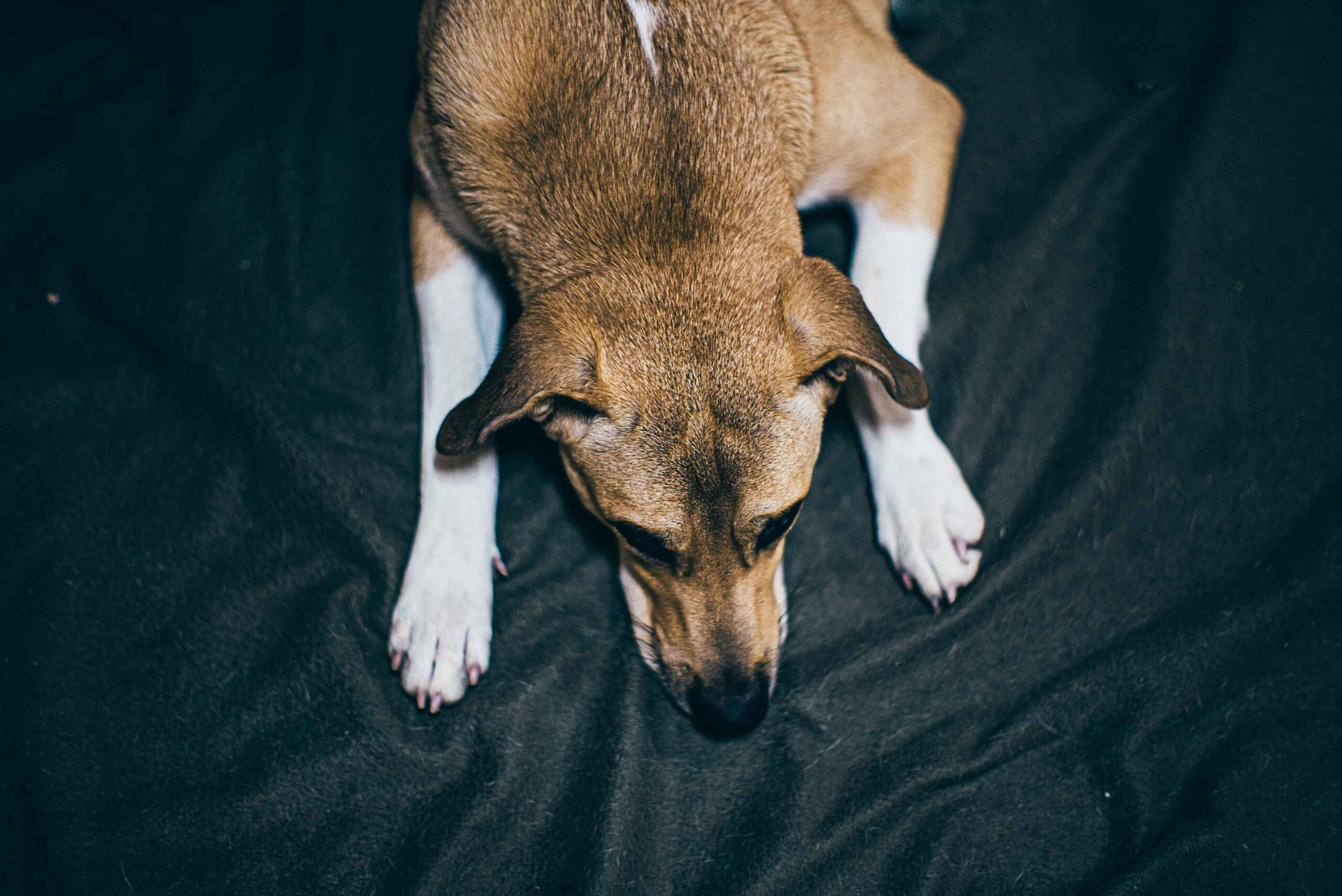Anxiety can be a natural thing for your pet to experience occasionally, especially if they have recently gone through any major changes in their environment. Have you moved to a new home recently? Did you travel somewhere without taking them? Have they had a rough incident with another pet, such as at the dog park? Did you leave your pet with a new sitter?
If your pet is experiencing constant anxiety without any apparent cause, this can lead to potential behavioral health problems in the long run. Whether you’re an owner of a dog, cat, or other small pet, many of these tips can help relieve your pet’s stress and anxiety.
Causes of Pet Anxiety
Anxiety in pets can be a huge concern and make doing everyday activities a challenge. Even simple things like leaving the house to run errands could be problematic for some owners. Pets will show stress in various ways; some appear nervous, whereas others can be destructive or even aggressive.
Anxiety can be triggered and shaped by different upbringings and past experiences. Fear-related anxiety typically begins with a lack of appropriate socialization training when they are young or after a bad experience with a human or another animal. For example, one study found that puppies should be exposed to a variety of animals, people, and sounds early on. Otherwise, they are more prone to react negatively to new experiences.
If your pet has anxiety suddenly, it’s worth checking whether or not there are any underlying health issues. Sudden loss of hearing or blindness could be symptoms of life-threatening issues. A frightening experience could cause your pet to become very anxious quickly.
Before you deal with your pet’s anxiety, it’s important to determine the type of anxiety that is plaguing them so that you can treat it appropriately. There are different types of anxiety that pets can suffer from, including:
Separation Anxiety
Your pet’s need for companionship drives separation anxiety. Typically dogs and cats do not like being left on their own, even for moderately short periods. The stress of being apart from his or her owner can cause your pet to act out. A dog may bark or howl when you leave the house, become destructive, pace excessively, or chew on your household. Conversely, cats might meow loudly or scratch on furniture. It’s crucial to train your pet to be happy in their own company from a young age. While it may seem sweet now if your pup or kitten wants to follow you from room to room, it could possibly become problematic as they become older.
Fear-Related Anxiety
Pets can be fearful of many things, with noise phobias being one of the most common reasons for anxiety. Loud noises, like fireworks or thunderstorms, are typical stress triggers for pets. However, some animals can also be triggered by traffic noise, gunshots, footsteps at the door, and other noises.
Other animals are fearful of specific events like a trip to the vets, a ride in the car, or meeting new people. There are many varying degrees of anxiety, with some pets appearing mildly uncomfortable when faced with their fears, whereas some pets can even lash out and become aggressive, especially if they feel trapped or helpless.
Age-Related Anxiety
Many pets become anxious as they grow older. With age comes cognitive dysfunction and mental decline. This leads to confusion, causing your pet to become overly anxious. Some animals start misplacing things like their food bowl or toys, forget normal social rules, or may bark or meow at random.
 https://unsplash.com/photos/Ga6z9QD8yvw
https://unsplash.com/photos/Ga6z9QD8yvw
Symptoms of Anxiousness
It’s crucial to distinguish between normal and anxious pet behaviors, which requires familiarity with your pet’s normal behavior. For example, relaxed dogs will have round, raised tails, open eyes, and raised forward-facing ears. They’ll breathe normally unless they are panting from exercise or play. Here are some pet anxiety symptoms to look out for:
Shaking & Pacing
Just like humans, pets often make wide circling movements or pace repeatedly when stressed. This is generally a sign of nervousness or panic. Your pet may also shake or tremble and will only stop once the stressor is gone.
Yawning
Pets won’t only yawn when they are tired but also when they’re nervous. Usually, these yawns are longer and more frequent than when they are tired.
Drooling
For dogs, their nervous system is activated by stress and causes frequent lip-licking or drooling. This is usually seen when a dog has nausea and may be correlated to the activation of the gastrointestinal tract from the nervous system.
Hiding or Acting Depressed
Stressed pets will hide behind you or behind objects like under a bed to avoid stressors. Dogs can seem hyperactive and use their muzzles to nudge your hands or legs to tell you to move away from the potential stressor. Your dog may completely stop moving and seem disassociated from the situation.
Increased Heart Rate & Panting
The nervous system kicks in automatically when stress and anxiety occur. This is the common “fight, flight, or freeze” response to external stressors or fears and is an involuntary response system for survival. When a dog is stressed, its nervous system releases adrenaline and increases its respiratory and heart rate, which is often seen as panting.
Compulsive Behaviors
Pets engage in a wide variety of behaviors to help calm themselves, but they can quickly become compulsive and destructive when they are extremely stressed. Common compulsions include licking themselves excessively, barking excessively, or chewing or scratching objects compulsively.
These behaviors can lead to skin infections from an overgrooming, upset stomach from ingesting things, foreign body ingestion, digging behavior, or destroying their crates to break free. Whining, meowing, or barking can also be a self-soothing behavior in anxious pets, which is a way to alert us to their stress.
Treatment for Pet Anxiety
The first step in treating a pet’s anxiety is to talk to your vet so they can help you identify the specific underlying cause. From there, you have some options, which include the following:
Desensitization
Your pet likely has certain triggers that bring them fear, such as other pets, the vacuum, or your energetic niece. Continuing to reintroduce this trigger may help them be less afraid of it over time. Usually, you use treats to reward calm behavior around the trigger. Desensitization training means introducing your pet to the trigger for their anxiety in small doses, working up to higher doses, and pairing that trigger with rewards to change their negative response into a positive one.
Counterconditioning
Counterconditioning helps divert their attention away from negative behaviors during moments of stress. For instance, if your dog begins barking or acting aggressively around visitors, teaching them to focus on you can be beneficial. Essentially, counterconditioning works by having them focus on something other than the trigger. This type of training changes your pet’s response to things that trigger their anxiety. You may train your pet to sit when they get anxious about something instead of pacing or whining.
Pet Vest
The pet anxiety vest is a specific type of vest designed to relieve anxiety and stress. It works by applying pressure to certain body parts and promotes relaxation and calmness. There are a variety of brands offering different types of calming vests for pets. The ThunderShirt is an anti-anxiety jacket that applies calming pressure to a dog’s body, similar to swaddling an infant, and it helps with all forms of anxiety.
Medication
For severe or chronic anxiety, your vet might recommend medications such as antidepressants like clomipramine and fluoxetine. If you anticipate that something is going to happen which could trigger your pet’s anxiety, your vet can prescribe a benzodiazepine to help them better cope with the stress. Remember that medications for your pet should always be prescribed by your veterinarian.
Pheromones & Herbal Remedies
Pet-calming pheromones can help your pet feel calmer and safer on a regular basis. They come in many forms, such as diffusers, sprays, collars, and wipes. Many natural pet products are used as treatment options, such as teas, tablets, or tinctures made from calming herbs like chamomile or valerian.
Prevention
There are various ways to prevent pet anxiety. Here are some helpful tips on how to keep your pet stress-free:
- Avoid Triggers: The best thing you can do is avoid things you know will trigger your pet’s anxiety. While this isn’t always possible, you can minimize the exposure.
- Regular Exercise: Physical activity is essential for preventing pet anxiety. Also, regular exercise will keep your pet in shape and prevent potential obesity-related health conditions.
- Socialization. Socialization can help prevent anxiety in many ways. Always try to give them attention throughout the day, such as petting them and letting them participate in your activities such as strolls to the grocery store. Additionally, you can enroll your pet in daycare and make sure they meet new animals while learning to interact with them. Pets are naturally social animals and are less lonely hanging out with a buddy. If one animal isn’t enough for your household, arrange play dates with other pets or take them to a daycare service.
- Mental Stimulation: The pet’s mind needs exercise to stay healthy and sharp. You can prevent anxious behavior by providing interactive and puzzle toys, so they can receive mental stimulation, especially when you aren’t actively giving them attention.
- Start Training: Pet training can go a long way in shaping their behavior. If training your pet is more than you can handle, you can hire a professional trainer to teach them how to avoid destructive behavior such as scratching the furniture or chewing on things.
Find a Solution for Your Pet
Your pet is an individual shaped by their unique experiences and upbringing. The triggers for your pet’s anxiety may not be the same as they are for another pet which is why you must consult with your vet about your concerns and be prepared to try a few treatment options before you find the one that works best. Always try to identify the cause and symptoms of your pet’s anxiety before trying some of the solutions listed in this post.
Photo by Nattaphat Phau: https://www.pexels.com/photo/overhead-shot-of-a-dog-5851306/
photo credit: Love our content? Share it with a friend or link it to social media. Like short clips of cute household pets? Training tips? Follow us on instagram @nydognanny or on YouTube at nydognanny. Have some news you needs to get to dog and cat parents stat? Email info@newyorkdognanny.com with your article pitch.




